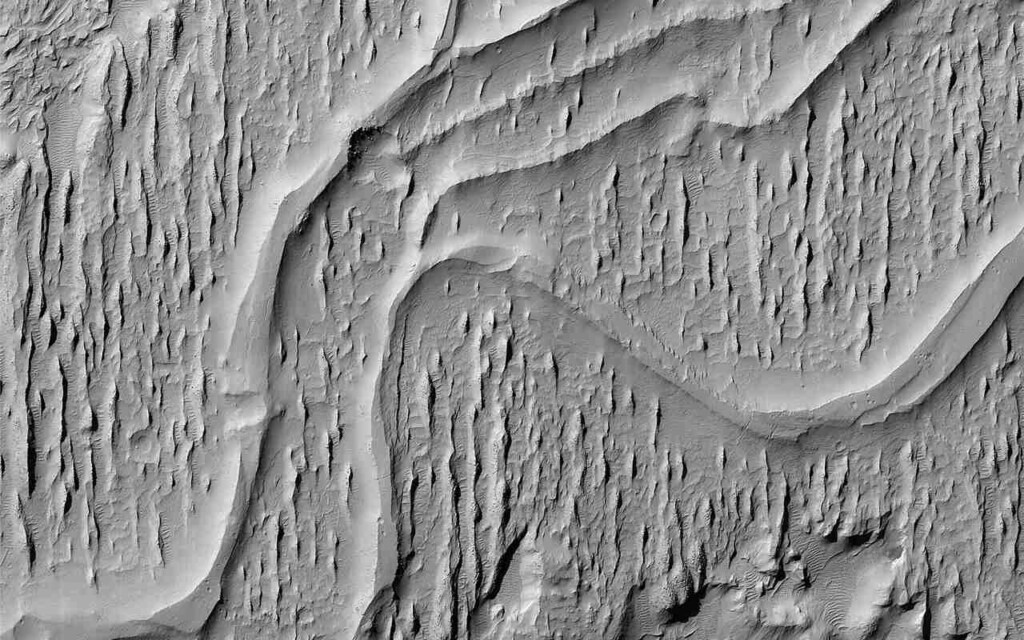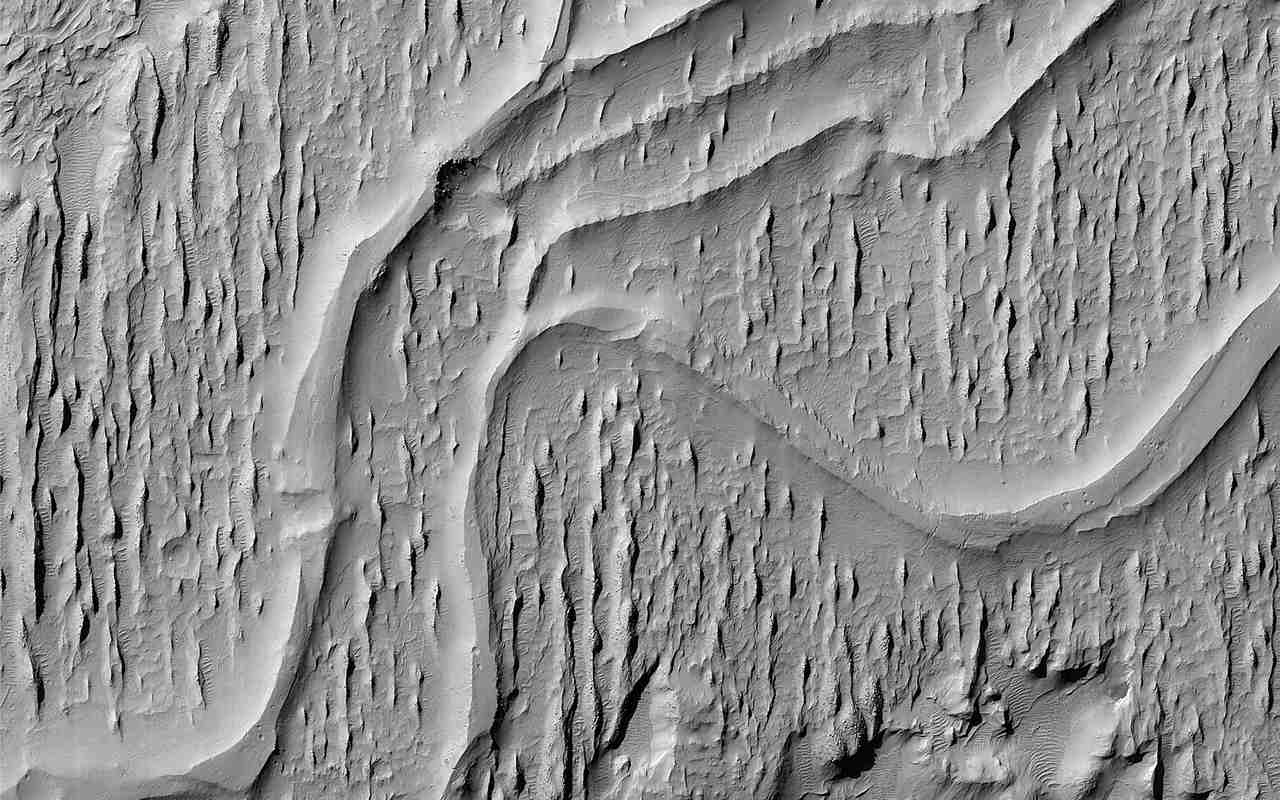
The picture above was taken not on Earth, but by the Mars Reconnaissance Orbiter (MRO) as it searches for signs of water and ice on the Red Planet.
Photographed above an ancient river system in the Aeolis Planum region, the incredible pictures conjure imaginative images of a Martian surface very different to that of today.
The MRO typically flies at an altitude of about 155 to 196 miles (250 to 316 kilometers) above the planet’s surface, allowing it to capture intricate details.
These ridges show the location of the old river beds in Mars’ distant past.
“River beds often get filled with gravel and the surrounding terrain is often built up of fine-grained mud from river overflows. The gravely river bottom and the fine-grained surroundings can lead to a strange phenomenon that geologists call inverted channels,” the space agency wrote.
“After the river disappears, the fine-grained surroundings can be easily eroded away leaving the gravely river bed as a high-standing ridge. The angle at which the ridges join together indicates that these rivers flowed from top-right to bottom-left.”
The image was captured by the High-Resolution Imaging Science Experiment (HiRISE) camera on MRO, and was catalogued by NASA on the final day of January 2024.

The MRO is a spacecraft designed to search for the existence of water on Mars and provide support for missions to Mars, as part of NASA’s Mars Exploration Program.
OTHER MARTIAN DISCOVERIES: Ancient Lake Sediment on Mars Builds Excitement for Evidence of Life in the Perseverance Rover Samples
It was launched from Cape Canaveral in August 2005 and reached Mars in March 2006.
As of July 2023, the MRO has returned over 450 terabits of data, helped choose safe landing sites for NASA’s Mars landers, and discovered pure water ice glaciers in new craters in the Northern polar region. It has also found chloride deposits, suggesting that lakes may have been scattered over large areas of the Martian surface.
SHARE This Dramatic Evidence Of Waterflow On Mars…




















